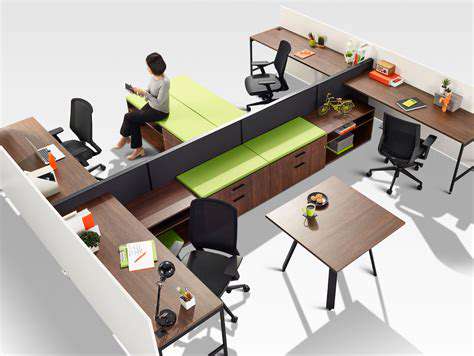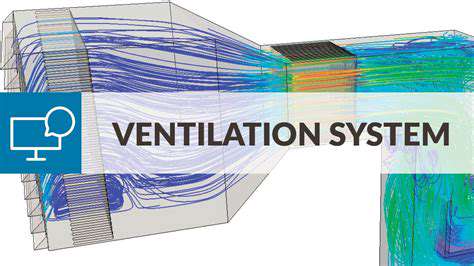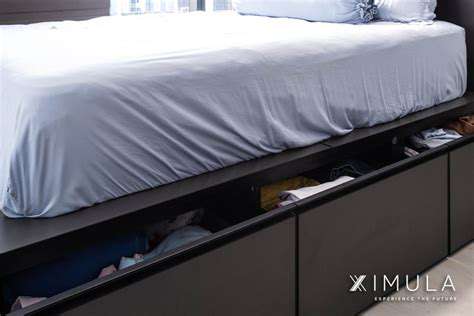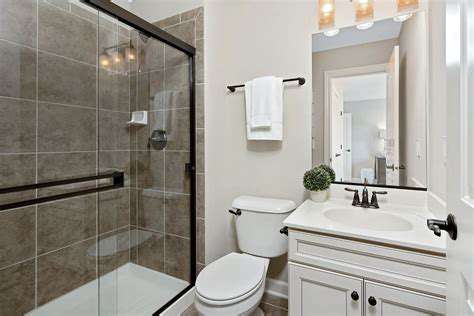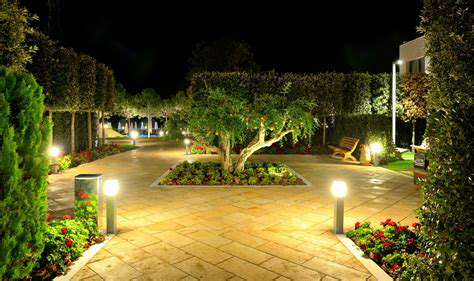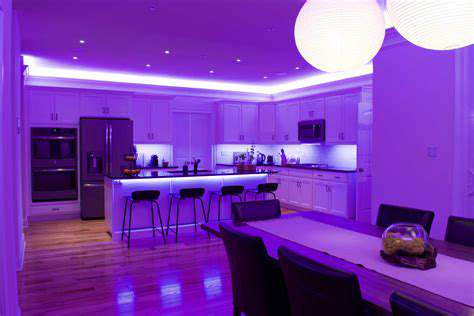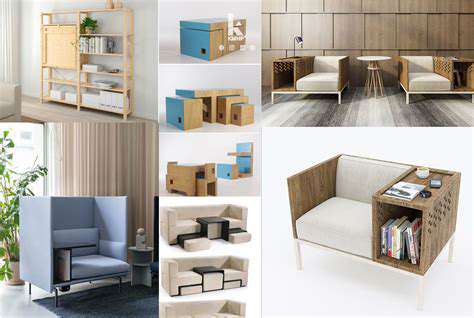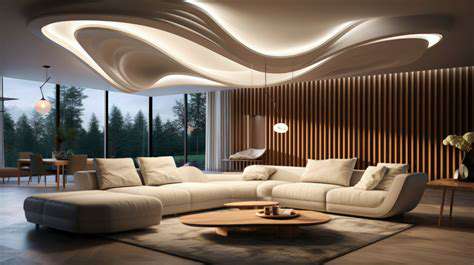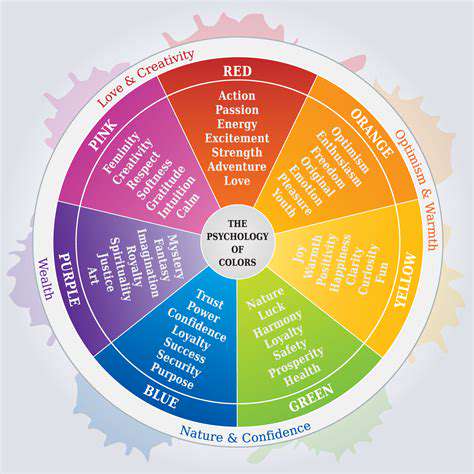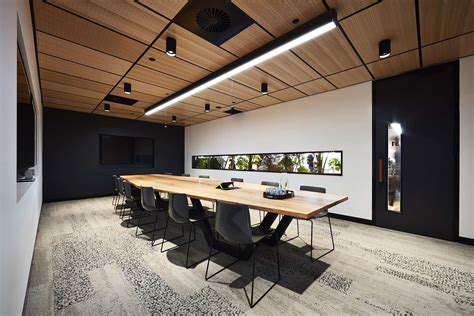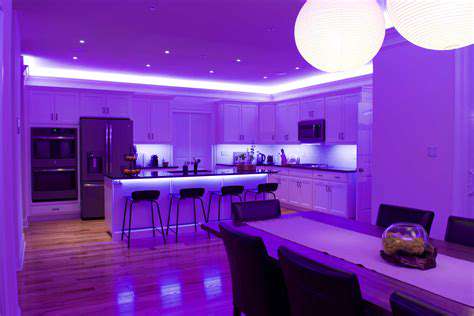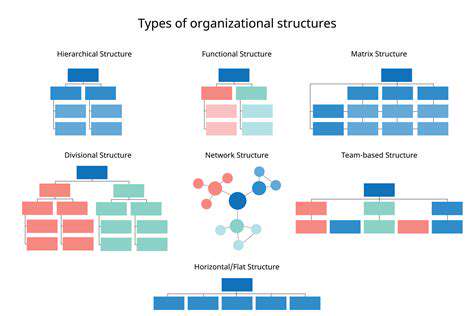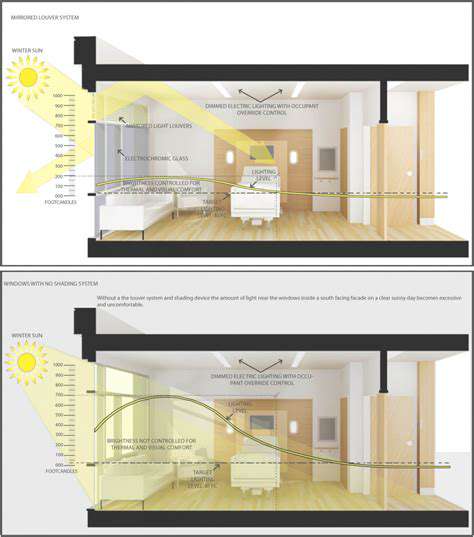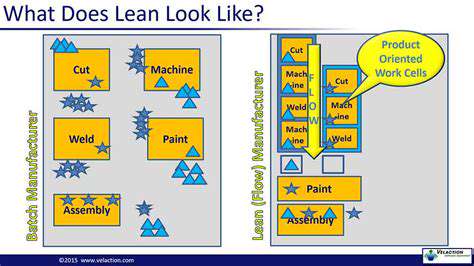Our blog offers comprehensive guides and creative ideas for modern interior design and home improvement, covering everything from safe, stylish bathrooms and productive study spaces to playful children’s rooms and versatile living areas to inspire your perfect home.
A Comprehensive Guide to Color, Light, Texture, and Personal TouchesCreating the perfect bedroom sanctuary involves careful consideration of various design elements, including color palettes, lighting, textures, and personalized decor. This comprehensive guide delves into the nuances of transforming your space into a haven that reflects your unique style and promotes tranquility. Choosing the Right Color PaletteColors profoundly impact our emotions and behaviors. Understanding color psychology can aid in selecting hues that create a calming environment. Soft blues and greens promote relaxation, while more vibrant tones like reds can energize but may not be conducive to a restful sleep space. A cohesive color scheme is essential; start with a primary color and complement it with softer shades to create depth without overwhelming the senses.Additionally, room size and lighting play pivotal roles in color selection. Lighter hues can make a small space feel open and airy, while rich gem tones add warmth to rooms lacking natural light. Don't forget to experiment with accent walls for a touch of boldness without sacrificing harmony. Setting the Mood with LightingLighting transforms how we perceive a space and can significantly affect our mood. Ambient, task, and accent lighting each serve distinct purposes and can enhance both functionality and aesthetics. Opting for warm-white LED bulbs and incorporating dimmable features allows for versatile lighting adjustments suited to different activities.Natural light is also vital; maximizing its entry can elevate your mood and improve sleep quality. Consider using sheer curtains or reflective surfaces to bring the outdoors in, creating a welcoming ambiance. Elevating Comfort with Textures and FabricsTextiles add depth and comfort to your bedroom. Layering materials—such as cotton, velvet, and natural fiber rugs—can invite relaxation while enhancing overall aesthetics. Choose fabrics thoughtfully based on durability and comfort, especially if you're accommodating pets or children. Lush bedding and well-placed decorative throws can elevate the inviting feel of your sanctuary. Optimizing Furniture ArrangementThe arrangement of furniture impacts how you flow through your space. Measuring your room dimensions helps prevent overcrowding and encourages a harmonious atmosphere. Choose furniture that complements both your style and the room size; multifunctional pieces can maximize space efficiently.Creating pathways around furniture is crucial, ensuring movement is effortless. Use rugs to define distinct areas, guiding the eye while maintaining an open feel. Reflecting Your Personal StyleLastly, adding personal touches can make your bedroom truly yours. Incorporate meaningful artwork, textiles, and decor that resonate with you. A memory wall or sentimental accessories can bring warmth and personality, while a curated collection of cherished items can transform your space into an emotional retreat.By thoughtfully blending these elements, you can craft a bedroom that not only looks stunning but also nurtures your well-being, making it a perfect personal sanctuary.
Mar 21, 2025
Key InsightsCreating a bathroom that effectively separates wet and dry areas involves more than just aesthetic choices; it requires careful planning and selection of materials, partitioning solutions, and effective ventilation and drainage systems. This comprehensive guide walks you through critical factors to consider for a functional and stylish bathroom design. Choose the Right MaterialsSelecting the right materials is essential when designing a bathroom. Water-resistant options, such as ceramic tiles, quartz, and engineered stone, help prevent moisture damage. While natural stones like marble may offer beauty, they often require more maintenance. Prioritize materials that are easy to clean and maintain, ensuring that your bathroom remains durable and stylish for years. Aesthetic vs. FunctionalityWhile attractive materials are important, the functionality of your bathroom design should take precedence. Incorporate slip-resistant tiles and consider using glass dividers for wet zones to blend style with safety. Incorporate Partitioning SolutionsUnderstanding your partitioning options is crucial for separating wet and dry areas effectively. Glass panels, tempered glass, and waterproof materials enhance both aesthetics and functionality. A well-planned partitioning strategy can create visual distinctiveness while optimizing space. Optimize VentilationEffective ventilation is vital for maintaining air quality and reducing humidity in bathrooms, particularly those prone to mold growth. Consider exhaust fans or natural ventilation methods to keep your bathroom dry. Proper fixture placement for ventilation is essential for ensuring optimal airflow. Plan for Effective DrainageA robust drainage system enhances the longevity of your bathroom by preventing water stagnation and damage. Opt for materials that ensure strong performance, like stainless steel for grates and PVC for pipes, ensuring compliance with local plumbing codes. Consider Lighting WiselyNatural light significantly impacts the mood and functionality of your bathroom. Strategically placed windows can enhance ambiance, but when natural light is lacking, a blend of ambient, task, and accent lighting becomes necessary. Energy-efficient solutions, such as LED lighting, help save on energy costs and contribute to sustainability. Final Thoughts: Accessibility and SafetyWhen designing your bathroom, always consider accessibility and safety features. Install grab bars and use non-slip flooring to accommodate all users. A well-thought-out layout, along with the right materials and features, can transform your bathroom into a safe and appealing space.Embracing customization options and seeking professional guidance can further enhance your bathroom design project, ensuring that it meets personal preferences while maintaining practicality. Create a serene and stylish environment by striking the perfect balance between aesthetics and functionality in your bathroom design.
Mar 21, 2025
Optimize Your Bedroom for Better Sleep QualityCreating a serene and restful environment in your bedroom is essential for optimizing sleep quality. Studies show that factors such as light, noise, temperature, and the layout of your space play crucial roles in determining how well you sleep. By understanding the impact of these elements and applying strategic design principles, you can create a bedroom that promotes relaxation and rejuvenation. Key Strategies for Enhancing Sleep Quality 1. Understanding Sleep QualityThe first step towards improving your sleep quality begins with understanding its fundamental components. The National Sleep Foundation highlights the importance of minimizing light, noise, and temperature disturbances. A well-planned bedroom layout can encourage relaxation and contribute to a more restful sleep cycle. 2. Strategic Furniture PlacementPositioning your bed away from noise sources and balancing the overall layout can create a calming environment. Consider utilizing nightstands for ease of access and maintaining a peaceful sleeping space. 3. Lighting AdjustmentsIncorporate natural light through windows or mirrors, and utilize soft ambient lighting in the evenings. This gradual transition helps signal your body that it’s time to wind down. Dimmable LED lights and blackout curtains can enhance your control over the bedroom lighting, further promoting quality sleep. 4. Temperature ControlMaintaining a bedroom temperature between 60-67°F (15-19°C) is optimal for restful sleep. Improve air quality with houseplants or air purifiers to create a refreshing environment conducive to relaxation. 5. Maximizing Storage SolutionsAn organized bedroom can significantly reduce stress. Use multi-functional furniture, such as ottomans with hidden storage, to keep clutter at bay. This not only enhances functionality but also contributes to a serene atmosphere. Incorporating Multi-Functional Furniture Assessing Space NeedsEvaluate the layout of your bedroom to determine how best to incorporate multi-functional furniture. Choosing pieces that serve multiple purposes, such as beds with built-in storage or adjustable desks, can maximize space while ensuring comfort. Personalizing Your SpaceSelect a color palette that reflects your personal style while promoting relaxation. Incorporating natural elements like plants not only purifies the air but enhances tranquility, making your bedroom a calming retreat. Decluttering for ClarityA tidy space fosters a clearer mind. Utilize effective storage solutions to maintain order, and invest in quality textiles that enhance comfort. Maximizing Vertical StorageUtilize wall cabinets and vertical shelving to expand your storage options without sacrificing floor space. Creative solutions, such as using under-bed storage or over-the-door organizers, can significantly reduce clutter and improve the overall aesthetic of your bedroom. Creating Cozy NooksDesignating areas for relaxation, such as reading nooks with soft seating and proper lighting, can enhance your bedroom’s ambiance. Integrating calming decor and suitable plants will create inviting, stress-reducing corners. ConclusionInvesting in effective design strategies and thoughtful personalization can transform your bedroom into a peaceful oasis. Embrace principles such as strategic furniture placement, clever storage solutions, and mindful color choices to significantly enhance your sleep quality. A well-designed bedroom is not just an aesthetic choice; it's a commitment to nurturing your well-being and restful nights.
Mar 21, 2025
Choosing the Right Materials for Anti-Slip SolutionsEnsuring safety in bathroom designs is paramount, and selecting the right materials for anti-slip solutions plays a critical role. Understanding slip resistance ratings, commonly expressed as Coefficient of Friction (COF), is essential when choosing materials. A higher COF indicates better slip resistance, crucial for wet areas like bathrooms. The American National Standards Institute (ANSI) recommends a COF between 0.50 and 0.60 for wet environments to significantly reduce slips and falls without compromising aesthetics. Common Material OptionsMaterials such as textured porcelain tiles, rubber flooring, safety vinyl, and natural stone are popular for their slip-resistant properties. Textured finishes enhance grip but can be more challenging to clean, while smooth surfaces are easier to maintain but may present heightened slip risks. Finding a balance between aesthetics and practicality is vital in bathroom design. Effective InstallationThe effectiveness of anti-slip solutions relies heavily on proper installation. Engaging professionals ensures correct application technique and adherence to manufacturer specifications. Regular maintenance, including cleaning and resealing, extends the lifespan of these surfaces, preserving safety features over time. Innovative Anti-Slip TreatmentsConsider adding innovative treatments like chemical anti-slip coatings to existing surfaces, enhancing traction without altering their appearance. Non-slip grip strips also offer a temporary yet effective safety solution, ideal for rental properties or spaces requiring flexibility. Future Trends in Bathroom SolutionsEmerging trends include eco-friendly materials and smart home technology. Biocomposites provide sustainable options while maintaining safety. Furthermore, flooring systems are now being developed with integrated sensors to detect slippery conditions, enhancing safety through advanced technology. Designing for Small BathroomsSmall bathrooms present unique challenges, necessitating innovative layouts and storage solutions. Vertical space utilization, smart fixtures, and layered lighting can create a functional yet aesthetically pleasing environment. Light color schemes and strategic placements of mirrors enhance the perception of space and improve safety. Overall Safety and AestheticsUltimately, effective bathroom design marries safety with style. By choosing the appropriate anti-slip materials, optimal storage solutions, and thoughtful color and lighting schemes, homeowners can create inviting spaces that prioritize safety while offering a polished look. Regular inspections and maintenance of safety features are crucial to sustain both functionality and aesthetics. Explore our comprehensive articles on bathroom safety, storage, and design to learn how you can implement these strategies effectively in your own home.
Mar 21, 2025
The Heart of Functionality in Bathroom DesignCreating an efficient and stylish bathroom cannot be underestimated, especially in small spaces where each inch counts. Smart bathroom layouts play a pivotal role in maximizing functionality while ensuring safety and aesthetic appeal. By carefully planning the construction and organization of this vital area, you can transform it into a relaxing sanctuary. The Importance of Bathroom LayoutsA well-designed bathroom layout is essential for accessibility, allowing users to navigate easily while using functionalities like sinks, showers, and toilets. According to the National Kitchen and Bath Association, an optimal layout can greatly enhance your day-to-day experiences while elevating your space's overall look. Prioritizing essential fixtures and organizing them smartly can significantly improve usability and aesthetics. Key Elements of Functional Bathroom DesignWhen revamping a small bathroom, consider key elements such as light, storage, and materials. Optimize natural light with well-placed mirrors or windows to create the illusion of a larger space. Invest in vertical storage solutions like shelves and cabinets, making the environment more organized and clutter-free. Moreover, selecting light-colored tiles can amplify the feeling of space, while modern fixtures offer a sleek and trendy appearance. Planning Smart Layout SolutionsInitiating a redesign requires a clear plan. Start with scaled drawings to visualize your bathroom layout, considering existing plumbing. Organize your essential features efficiently to avoid costly mistakes. Incorporate innovative designs like pocket doors or foldable storage solutions, ensuring space optimization without sacrificing style. Avoiding Common Layout PitfallsPlan meticulously to prevent common mistakes such as neglecting door swing and clearance, which can disrupt the flow of the bathroom. Also, ensure sufficient storage from the start to minimize frustration later on. Proper ventilation is vital for both health and aesthetics, so consider locating exhaust fans strategically. Choosing the Right Color PaletteUnderstanding color theory is crucial for small bathrooms. Light hues can reflect more light, creating a spacious feel, while darker shades may provide warmth. Opt for complementary or monochromatic schemes to maintain cohesion without overwhelming the space. A carefully thought-out color palette can set the tone and enhance ambiance. Intelligent Storage Solutions for Small SpacesIntroduce smart storage designs, focusing on functionality and style with modular/hanging shelves and multifunctional furniture. Maximizing vertical space is essential—think wall-mounted cabinets to maintain floor space while keeping essentials organized. By integrating smart technology, like IoT devices, into your storage solutions, streamline your daily routine while keeping your space tidy. Functional and Stylish Flooring ChoicesChoose flooring that combines durability and style; porcelain tiles and luxury vinyl plank (LVP) are popular for their water resistance and aesthetic flexibility. Each option contributes to a safe and visually appealing bathroom environment. Lighting: Enhancing Safety and AmbianceEffective bathroom lighting is essential. Different types of lighting, including ambient, accent, and task lighting, play critical roles in achieving safety and style. Consider fixture types and placement to ensure optimal illumination without compromising design aesthetics. Incorporating dimmers can enhance the mood while allowing for versatility in lighting to suit different activities. ConclusionThrough thoughtful planning, effective organization, and smart choices in color, storage, flooring, and lighting, you can create a bathroom that fulfills both practical needs and stylistic desires. Discover how to make your small bathroom a functional and stylish retreat by implementing these intelligent design strategies.
Mar 21, 2025
Essential Tips for Better RestIf you're looking to enhance your sleep quality and create a restful environment, this comprehensive guide covers everything from choosing the right mattress to developing a consistent bedtime routine. Here’s how to create a sleep sanctuary at home: 1. Optimize Mattress and Bedding ChoicesChoosing the right mattress is essential. Memory foam provides contouring support while innerspring is more breathable. Consider mattress firmness as well; medium-firm is often recommended for optimal comfort and spinal alignment. Evaluate bedding materials, opting for breathable cotton or moisture-wicking bamboo sheets. Don't forget the importance of pillow support—back and side sleepers require different pillow types for comfort and alignment. Regular maintenance, like washing sheets weekly and rotating mattresses, greatly influences hygiene and longevity. 2. Create a Calming Ambiance with LightingDevelop a layered lighting scheme combining ambient, task, and accent lighting. Dimmable options can enhance relaxation by adjusting brightness throughout the day, making your space more versatile. Smart bulbs that change color and brightness can also create the ideal atmosphere for winding down. 3. Declutter for a Peaceful Personal SpaceClutter negatively impacts sleep quality, leading to stress and anxiety. Maintain a clean, organized space to facilitate relaxation. Begin with small areas, sorting items into 'keep', 'donate', and 'discard' categories. Keeping your bedroom tidy can foster a calm environment conducive to sleep. 4. Integrate Nature with Plants and AromatherapyIncorporating indoor plants like snake plants or peace lilies can improve air quality and enhance your mood, leading to better sleep. Aromatherapy using essential oils such as lavender and chamomile can promote relaxation. Implementing both plants and soothing scents creates a harmonious bedroom environment. 5. Establish a Consistent Bedtime RoutineA consistent sleep schedule helps regulate your body's internal clock, promoting better sleep quality. Engage in calming pre-sleep rituals—like reading or taking a bath—and limit screen time to boost melatonin production. Ensure your sleeping environment is comfortable—dark, quiet, and cool.Monitor your sleep patterns for insights and consider gradual adjustments to your schedule for a smoother transition into better sleep habits. Flexibility is key; allow for occasional deviations without compromising your core routine.By implementing these strategies, you’ll not only improve your sleep quality but also enhance your overall well-being. Prioritize your sleep environment and establish habits that facilitate restorative rest, leading to a healthier, more productive life.
Mar 21, 2025
Tips and InsightsDesigning the perfect study room is essential for enhancing productivity and maintaining focus. In this comprehensive guide, we outline critical factors to consider when selecting the ideal study space, from the location and furniture to color psychology and personal touches. Choose the Right LocationFinding the optimal environment starts with analyzing noise levels, natural light, and space ambiance. A dedicated area free from distractions is crucial for effective studying. Ensure your study room is positioned close to essential resources—books, stationery, and technology—minimizing interruptions and boosting efficiency. Comfort and FlexibilityComfort plays a key role in your ability to study for extended periods. Select a space that allows various seating arrangements and work surfaces, enhancing both relaxation and focus. Ergonomic furniture can prevent discomfort, allowing for shifts between different tasks and better productivity. Functional Furniture SelectionInvesting in ergonomic furniture is vital to maintaining focus and comfort during study sessions. Adjustable desks encourage variations in working positions, combating the drawbacks of prolonged sitting. Multi-functional pieces can save space while providing essential utility, perfect for smaller study areas. Materials MatterDurable materials enhance longevity and comfort. Choose items that reflect your personal style while being easy to clean and maintain. As technology increasingly influences our workspaces, integrating tech-friendly furniture features—such as built-in charging stations—can keep your study area organized and efficient. Design with Color Psychology in MindColor significantly impacts mood and productivity. Using calming hues like blue, along with energizing shades such as yellow, can create a conducive learning environment. Implement these colors thoughtfully to nurture focus while avoiding distractions, ensuring your study room adapts to your tasks' emotional demands. Effective Color ApplicationUse color strategically to delineate different functional areas of your workspace. Consider how natural light impacts color perception throughout the day, ensuring your study space remains inviting and productive at all hours. Integrate Relaxation ElementsBringing nature indoors through plants can enhance both mood and productivity, creating a calming atmosphere. Consider low-maintenance options like succulents to improve air quality without diverting your attention from studying. Mindfulness in the Study RoomIntegrating mindfulness practices into your routine can foster a balanced workspace. Consistently taking short breaks and practicing deep-breathing exercises can reset your focus and enhance creativity. Personalize Your SpaceIncorporate personal artwork and unique furnishings that express your style while remaining functional. Create an environment where you feel inspired, using personalized lighting and decor that resonate with your identity. Motivation and Personal TouchesDisplay motivational quotes or reminders in your study space to stay focused and encouraged. Elements from your hobbies or cherished items can beautify your room while creating a comforting atmosphere that enhances productivity.---Creating the ideal study space is about harmonizing functionality with your personal style. By considering optimal location, ergonomic furniture, strategic colors, and personalized touches, you can foster a productive and motivating environment, setting the stage for academic success.
Mar 20, 2025
How to Maximize Kitchen Organization and EfficiencyTransform your kitchen into an organized, efficient, and functional space by following practical tips grounded in effective organization techniques. Whether you're an avid home cook or simply looking to declutter your kitchen, these strategies will help you assess your tools and layout, leverage vertical storage, embrace open shelving, invest in multi-functional furniture, and use baskets and containers for optimal organization. Assess Your Tools and SpaceStart by evaluating your kitchen tools. Create an inventory categorizing your items into essential, occasional, and rarely used. This enables you to easily identify which tools are necessary and which take up valuable space. High-quality items, such as chef's knives, can enhance your cooking efficiency, making it worthwhile to invest in them.Next, analyze your kitchen layout. Focus on maximizing counter space, accessibility, and natural light. Utilize wall-mounted racks and magnetic strips to create a logical flow within your workspace, enabling smoother cooking experiences. Utilize Vertical SpaceIncorporate vertical storage solutions to enhance organization. Use vertical dividers in cabinets for optimal space management, allowing for easy access to pots, pans, and baking sheets. Floating shelves can display frequently used items stylishly while saving precious counter space. Add pot racks to keep cookware accessible or implement pull-out storage solutions for narrow areas.Door-mounted organizers offer additional vertical storage, keeping condiments and utensils handy without cluttering countertops. By maximizing vertical space, you can create a more open and inviting kitchen. Embrace Open ShelvingOpen shelving can elevate your kitchen’s aesthetic as well as its functionality. Assess your space before implementing open shelves, choosing durable materials that enhance your decor while offering practical storage solutions. Strategically display kitchenware based on usage frequency, mixing functional cookware with decorative items to inspire creativity in the kitchen.Regular maintenance is crucial for open shelves. Routinely check for dust and reorganize items to keep your kitchen looking its best. Personal touches, such as family heirlooms or cookbooks, add charm and make your kitchen feel unique. Invest in Multi-Functional FurnitureMulti-functional furniture can drastically improve the usability of your kitchen. Items like kitchen islands that double as dining areas or prep stations save space and enhance efficiency. Choose foldable tables or rolling carts to optimize your setup, making transitions between cooking and dining seamless.When selecting furniture, consider both aesthetics and functionality to ensure a cohesive look while maximizing space. Vertical cabinets and shelving hide necessary appliances while keeping your kitchen organized and visually appealing. Divide and Conquer with Baskets and ContainersChoosing suitable containers can significantly enhance your kitchen organization. Categorize your items based on usage and select appropriate containers, such as clear canisters for easy identification. Baskets serve multifunctional purposes, from holding fruit to storing cookware, and can enhance your kitchen's aesthetic appeal.Encourage organization by grouping similar items together within baskets, which streamlines workflow and promotes a routine for tidiness. A well-organized kitchen improves your cooking experience, reduces stress, and ensures that everything has its place.By implementing these strategic organization tips, you can create a kitchen that's not only functional but also a joy to use. Enjoy a harmonious cooking space that reflects your style and elevates your culinary experience.
Mar 20, 2025
Maximizing Space with Smart Storage Solutions in Your KitchenStruggling with clutter in your kitchen? Discover the ultimate guide to maximizing space with efficient storage solutions. Begin with a thorough assessment of your kitchen needs, taking inventory of your cookware and pantry items. Organizing daily essentials for easy access while stowing away seasonal items can transform your workspace. Utilize Vertical SpaceEven the smallest kitchens can benefit from vertical storage! Installing shelves that reach the ceiling and using wall space for hanging racks can enhance both functionality and aesthetics. Magnetic strips for knives and jars can clear counter space, making your kitchen feel open and organized. Multi-Functional Furniture Opt for multi-functional furniture like islands that double as breakfast bars to maximize space. Choose furniture that can be tucked away, maintaining a clean and spacious layout. This flexibility not only enhances functionality but also ensures a user-friendly kitchen experience. Organize Drawers EfficientlyInvesting in drawer organization systems can significantly streamline your kitchen workflow. Using dividers keeps utensils and spices compartmentalized, while tiered organizers maximize space in larger drawers for easy access to all your kitchen essentials. Clear Storage Practices Clear bins and jars for pantry items create a cohesive look and facilitate better organization. Labeling containers helps maintain order while promoting easy meal prep. Seasonal rotations of kitchen items can help maximize efficiency and keep only the essentials at arm's reach. Hidden Storage Potential Don’t overlook underutilized areas such as the sides of cabinets or the backs of doors for additional storage. Small hooks can hold measuring cups or pot holders, while pull-out shelves make accessing hard-to-reach spaces effortless. Harmonizing Colors and AestheticsPair your smart storage solutions with a cohesive color palette to achieve a stylish and inviting kitchen. Understand color theory to select hues that evoke the desired mood. From calming blues to energetic reds, the right colors can enhance both the look and function of your cooking space. Enhance WorkflowDesign a kitchen layout that supports an efficient workflow. Establish distinct work zones for prep, cooking, and cleanup to reduce movement and improve productivity. By combining smart storage with an intentional layout, you'll create a kitchen that works for you. Invest in Style and FunctionalityChoosing stylish storage solutions can elevate your kitchen’s aesthetic without sacrificing utility. Consider built-in cabinetry and multi-functional appliances that can save space and keep your kitchen organized. Illuminate Your SpaceFinally, enhance your kitchen’s ambiance and functionality with effective lighting. Layered lighting — ambient, task, and accent — along with adjustable fixtures can create a welcoming atmosphere while ensuring your work areas are well-lit for detailed tasks.Transform your kitchen into an organized, aesthetically pleasing, and highly functional space with these smart storage and design solutions!
Mar 20, 2025
Your Guide to a Tranquil BedroomCreating a peaceful oasis in your bedroom can significantly enhance your relaxation and sleep quality. This comprehensive guide focuses on minimalist design, biophilic elements, smart technology integration, cozy textiles, and color psychology—cornerstones of a serene sleeping environment. 1. Minimalist Design for Maximum RelaxationMinimalist design emphasizes neutral color palettes to evoke calmness. Soft whites, grays, and beiges create a serene backdrop conducive to restful sleep. Utilizing functional furniture is crucial, as pieces that serve multiple purposes—like beds with storage—help reduce clutter and enhance space, promoting relaxation. Key Elements of Minimalist Design:- Neutral Color Palettes: For a calming atmosphere.- Functional Furniture: Maximizes space.- Limited Decor: Reduces visual clutter. 2. Biophilic Design ElementsIntegrating natural elements into your bedroom can elevate tranquility. Natural light plays a vital role, improving mood and sleep quality. Strategies like installing large windows or using sheer curtains can optimize daylight and support your body's natural rhythms. Benefits of Natural Light:- Regulates circadian rhythms- Enhances moodEmploying natural materials like wood, stone, and organic fabrics not only adds aesthetic appeal but also lowers stress levels, ensuring a cozy atmosphere. Indoor plants are another key aspect; they enhance air quality and introduce a calming connection to nature. 3. Smart Technology IntegrationRenovating your bedroom with smart technology can exponentially enhance your sleep experience. Smart lighting solutions allow you to adjust brightness and color temperature, ensuring a conducive sleep environment. Systems that mimic natural light cycles help reinforce your circadian rhythms. Smart Concepts:- Automated Climate Control: Regulate temperature for optimal sleep.- Sleep Monitoring Devices: Track patterns to identify improvements.- Integration with Home Assistants: Seamlessly control your environment. 4. Cozy Textiles and LayeringSelecting the right textiles is crucial for comfort. Opt for breathable materials like cotton or linen to improve airflow. Layering different fabrics—light throws and heavier blankets—can help maintain the ideal sleeping temperature while enhancing the visual appeal of your space. Textile Tips:- Natural Fibers: Mitigate skin sensitivities.- Layering Techniques: Adjust for seasonal comfort. 5. Color Psychology and Calming PalettesUnderstanding color psychology can drastically impact your sleep environment. Soft blues and muted greens help promote serenity and relaxation. The palette should be visually soothing, thus reducing distractions in your private sanctuary. Color Essentials:- Soft Neutrals: Create a calming backdrop.- Accent Colors: Introduce warmth without overwhelming.By embracing these principles, you can transform your bedroom into a serene oasis that prioritizes relaxation, well-being, and rejuvenation. Ready to Redesign?Explore these minimalistic concepts and smart innovations to create a relaxing bedroom sanctuary that invites tranquility and enhances your sleep quality.
Mar 20, 2025
The Importance of the Work TriangleIn the realm of kitchen design, the Work Triangle is a fundamental concept that illustrates the optimal arrangement of the three main work zones: the stove, refrigerator, and sink. This layout is essential for minimizing travel distance during food preparation, ultimately enhancing efficiency and reducing fatigue. With an ideal triangular distance ranging from 12 to 26 feet, a well-executed design can cut meal prep time by up to 30%, leading to a more enjoyable culinary experience. Guidelines for Effective LayoutsTo achieve an effective kitchen workflow, accessibility and efficiency should be prioritized. Maintaining adequate spacing—42 to 48 inches between countertops—is crucial to enable smooth movement. By visualizing your cooking process and adapting the layout accordingly, you can create an environment that supports your routine while remaining functional for multiple users. Beyond the Triangle: Additional ZonesIncorporating zones beyond the core Work Triangle fosters enhanced kitchen functionality. Meal prep areas, baking zones, and cleaning stations can streamline tasks and promote organization. Popular design trends include kitchen islands that serve as additional prep spaces and storage solutions. Understanding how these elements interact with your overall layout is vital for efficiency. Ergonomics in Kitchen DesignErgonomics plays a critical role in kitchen design, ensuring user comfort and productivity. Key considerations include countertop height and smart storage that minimizes bending and reaching. Incorporating pull-out shelves and drawer organizers not only maximizes efficiency but also nurtures a more enjoyable cooking atmosphere. Common Kitchen Design PitfallsAvoid overcrowding the Work Triangle with unnecessary appliances, as this can hinder workflow and lead to frustration. Additionally, ensure meal prep areas are not too distant from the cooking zones to facilitate fluid movement during cooking sessions. By sidestepping these common mistakes, you can enhance satisfaction and usability in your kitchen. Maximizing Storage for Workflow OptimizationEffective storage solutions are integral to kitchen efficiency. Utilizing vertical wall space with cabinets that extend to the ceiling can significantly enhance storage capacity. Moreover, organized drawers and functional cabinetry can streamline transitions between tasks, fostering a clean and inviting environment. Future Trends in Kitchen LayoutsContemporary kitchen trends focus on open and multifunctional spaces integrating cooking, dining, and entertaining. The rise of smart kitchen technology, including energy-efficient appliances, improves usability and adaptability for evolving family needs. Smart Storage Solutions to Maximize SpaceBy maximizing vertical space and choosing innovative cabinet solutions, you can enhance organization without compromising on style. Features like pull-out pantry shelves and stackable containers not only improve kitchen functionality but also maintain visual appeal. Efficiency with the Right AppliancesSelecting the right appliances is crucial for maximizing kitchen efficiency. Focus on energy-efficient models to reduce environmental impact and long-term costs. Smart appliances further enhance usability with connectivity features and programmable settings. Effective Lighting SolutionsWhen designing your kitchen, prioritize various types of lighting—task, ambient, and accent—to create an inviting and efficient atmosphere. Smart lighting options can offer tailored solutions that adapt to your needs, optimizing workflow. Multi-Functional Islands for VersatilityIncorporating multi-functional islands can revolutionize your kitchen space. From prep to gathering areas, a well-designed island promotes interaction while ensuring efficient workflow. By balancing aesthetics with practicality, you can create a visually pleasing and highly functional kitchen.Each of these elements contributes to a streamlined, ergonomic kitchen design that optimizes user experience and functionality, making cooking a joy rather than a chore.
Mar 20, 2025
Designing Your Ambiance with Colors and LightingDiscover how to create the perfect ambiance in your bedroom through the thoughtful application of color theory and lighting. Understanding how different colors influence emotions can lead to a serene atmosphere in your home. For instance, soothing shades of blue promote calmness, while vibrant yellows can energize the environment. Learn to mix and match complementary colors to enhance visual appeal and achieve a harmonious design.Lighting plays a crucial role in shaping the overall mood of your space. Embrace natural sunlight to energize your bedroom during the day and opt for soft, warm artificial lights at night to create a cozy environment. Consider adjustable dimmable fixtures to tailor the brightness to various activities, from winding down with a book to preparing for sleep.Discover synergistic ways to combine colors and lighting for a cohesive look. Selecting fixtures that match your color palette and employing layered lighting techniques can elevate the depth of your décor. Furthermore, ensure that your bedroom combines functionality with aesthetics by choosing versatile furniture that serves multiple purposes, like beds with built-in storage.Stay ahead of the curve with smart furniture solutions that incorporate the latest innovations. These pieces not only elevate aesthetics but also enhance organization through multi-functional designs. Learn effective techniques for assessing your storage needs and creating a clutter-free haven by utilizing versatile organizational tools like decorative boxes and tiered shelves.Incorporate personal touches with customized décor, from family heirlooms to travel memorabilia, that reflect your unique style. This not only beautifies your space but also contributes positively to your mental well-being. Engage in routines to maintain cleanliness and ensure your sanctuary remains inviting. Commit to regular cleaning practices, paired with effective storage solutions and sustainable cleaning products, to enhance your bedroom's ambiance.Creating an inviting environment is about finding the right balance between personal style and functional design. Embrace the journey of transforming your bedroom into a tranquil retreat that resonates with who you are, and enjoy the tranquility it provides. For more insights on effective home decoration strategies, explore our collection of articles on innovative bathroom interiors and smart furniture solutions.
Mar 20, 2025
Optimize Functionality and StyleTransforming your kitchen into a functional and cohesive space requires a thoughtful approach to layout, storage, and aesthetics. In this guide, we delve into essential strategies for optimizing your kitchen design, ensuring it is both beautiful and practical. 1. Optimize Layout for Flow and Functionality Assess Kitchen Workflow: Understanding kitchen workflow is crucial. Identify key areas for food preparation, cooking, and serving. Implementing the work triangle principle—aligning the sink, stove, and refrigerator—can enhance efficiency.Choose Efficient Layout Design: Whether a galley, U-shaped, or L-shaped layout, select what suits your space best. Open-concept designs encourage socializing while ensuring functional separation from cooking smells. 2. Incorporate Smart Storage SolutionsMaximizing Storage: Innovative storage solutions like pull-out cabinets and overhead shelving can keep essential items accessible and declutter countertops. Consider cabinetry that extends to the ceiling or utilizes corners with Lazy Susans to maximize space.Utilize Vertical Space: Install high shelves or pegboards to display herbs and utensils while maintaining accessibility. Smart storage turns cluttered spaces into organized environments. 3. Choose Suitable Appliances Investing in energy-efficient appliances not only lowers utility bills but enhances sustainability. Choose models that seamlessly integrate with your cabinetry for a cohesive look, prioritizing functionality based on your cooking habits. 4. Implement Effective Lighting StrategiesNatural and Artificial Lighting: A well-lit kitchen boosts safety and enhances ambiance. Combine under-cabinet, task, and accent lighting for a layered effect. Utilize natural light sources to create a warm atmosphere.Color Temperature Matters: The right lighting color temperature can create an inviting space and support various kitchen activities. Smart lighting solutions offer flexibility and can adapt to your routines. 5. Choose Cohesive Color Schemes and MaterialsUnderstanding Color Psychology: Colors influence ambiance; warm tones stimulate appetite while cool shades promote calmness. A cohesive color palette contributes to a unified look, making the space feel larger.Material Selection: Choose durable surfaces such as quartz or granite for hearts of the kitchen. Incorporating different textures, from polished finishes to rustic wood, can provide visual appeal and functionality. 6. Incorporate Multi-Functional FurnitureDefining Multi-Functional Furniture: Pieces serving multiple purposes, like kitchen islands that offer prep space and dining areas, optimize square footage. Foldable or extendable tables adapt to various situations.Balancing Aesthetics with Functionality: Choose mappable furniture that complements your decor, creating stylish yet functional arrangements. 7. Safety and ComfortPrioritize user safety with adequate spacing to prevent congestion, rounded countertop edges, and slip-resistant flooring. Smart design promotes a clutter-free zone, enhancing the cooking experience. Conclusion: Elevate Your Kitchen DesignWith thoughtful planning, you can create a kitchen that is a blend of functionality, style, and safety. From optimizing layout to selecting materials and lighting, every element contributes to a culinary space that meets your lifestyle while remaining timeless. Dive into the art of kitchen design and transform your space into a culinary haven today!
Mar 20, 2025
Choosing the Right Mattress and Bedding for Optimal Comfort Understanding Mattress Types for Personalized ComfortSelecting the ideal mattress is fundamental for a restful night’s sleep. Memory foam mattresses are increasingly preferred due to their ability to contour to the body, enhancing pressure relief and reducing motion transfer. A survey by the Better Sleep Council found that nearly 80% of users experienced improved sleep quality with memory foam. Conversely, innerspring mattresses provide classic comfort with better airflow, making them suitable for those who tend to overheat at night. Latex mattresses offer durability and a sustainable option for eco-conscious consumers. It’s essential to weigh the advantages of each mattress type against individual sleep preferences and body requirements to make the best choice. Choosing the Right Bedding to Enhance Sleeping EnvironmentOnce you identify the right mattress, focus on complementary bedding. The fabric of your sheets can dramatically influence comfort; cotton is durable and breathable while linen delivers luxury and excellent temperature control. Quality pillows are equally important and should align with your sleeping posture. Side sleepers often fare better with thicker, firmer options, while back sleepers may prefer medium loft pillows to ensure proper neck support. Prioritizing comfortable bedding is vital for enhancing sleep quality and promoting better sleep hygiene and overall well-being. Smart Bedroom Furniture Choices for Increased StorageMulti-use furniture has become a hallmark of modern bedroom design for its ability to maximize space utility. Furniture like beds with built-in storage drawers and foldable desks helps reduce clutter while providing easy access to essentials. An American Home Furnishings Alliance survey revealed that over 70% of consumers favor versatile furniture solutions. Similarly, vertical storage options such as tall bookshelves and hanging organizers are essential for optimizing space, especially in smaller rooms. Selecting furniture materials with both durability and style in mind is equally crucial, blending functionality with aesthetics. Creating a Calm Ambiance with Lighting and DecorLighting plays a pivotal role in influencing mood, with warm-toned fixtures fostering relaxation. Layered lighting options, including ceiling fixtures, sconces, and bedside lamps, enhance both functionality and decor. Smart lighting solutions, such as dimmer switches, allow customization to create the perfect atmosphere for winding down. Additionally, using natural elements like indoor plants can improve air quality and enhance the overall ambiance. Integrating soft fabrics and a calming color palette helps create a serene space that encourages restfulness. Maximizing Space with Modular and Custom Furniture SolutionsModular furniture systems enable flexibility and customization, allowing for tailored configurations that suit various layouts and storage needs. Customized storage solutions, like built-in cabinets and under-bed compartments, help minimize clutter while ensuring easy access to belongings. Reports highlight that custom-designed rooms can significantly reduce visual disarray, leading to more tranquil environments. The Importance of Organizational Systems in Bedroom DesignEffective organization is vital for maintaining an inviting and restful bedroom space. Multi-functional furniture enhances usability by combining storage and comfort. Implementing a well-thought-out organizational system will streamline daily routines, while the right lighting amplifies both functionality and aesthetics, promoting a peaceful atmosphere conducive to sleep.In conclusion, thoughtful choices in mattresses, bedding, and furniture, combined with effective organizational strategies and lighting solutions, can transform your bedroom into a sanctuary of comfort and relaxation, significantly enhancing your quality of sleep.
Mar 20, 2025
Kitchen Storage Solutions for Optimizing Tool Arrangement in Open Spaces
Mar 20, 2025
Enhancing Safety, Aesthetics, and FunctionalityDiscover the significance of wet dry separation in modern bathroom design and how it plays a crucial role in enhancing safety, aesthetics, and functionality. This comprehensive guide delves into the various aspects of wet dry separation techniques, exploring innovative materials, design strategies, and smart technology integration. Why is Wet Dry Separation Important? Enhanced SafetyImplementing a wet dry separation system minimizes the risk of slips and falls in the bathroom, a common source of household injuries. By clearly defining wet areas and using non-slip materials, safety is significantly improved, protecting occupants from accidents and safeguarding fixtures from water damage. Aesthetic AppealModern bathrooms prioritize aesthetics, with wet dry separation allowing for attractive contrasts through various materials and design elements. Glass partitions or natural stone can create an illusion of space while contributing to a luxury feel, transforming the bathroom into a stylish retreat. Preventing Water Damage and Mold GrowthProperly segregated wet areas reduce the likelihood of mold and mildew, creating healthier living conditions. Incorporating efficient drainage solutions coupled with moisture-resistant materials further enhances hygiene and reduces maintenance costs. Efficient Space UtilizationWet dry separation yields an optimized layout, allowing homeowners to maximize storage and tailor arrangements to their routines. Multi-functional spaces become practical and visually appealing, enhancing the overall user experience. Incorporating Green SolutionsSustainability is at the forefront of modern design, where eco-friendly materials and low-flow fixtures contribute to water conservation. These choices not only support environmental initiatives but can lead to significant cost savings on utility bills. Design Techniques for Effective Wet Dry Separation Material SelectionChoosing the right waterproof materials is key. High-quality porcelain tiles and moisture-resistant drywall can extend the longevity of bath features, while innovative materials like reclaimed composites align with sustainable practices. Thoughtful Drainage SolutionsEffective drainage systems such as linear drains minimize water pooling, addressing a common cause of mold. Positioning drains strategically can enhance both functionality and aesthetics, facilitating seamless transitions between wet and dry areas. Stylish Partition OptionsPartitions, such as glass panels, provide visual appeal while containing water spray. Flexible options like bi-fold doors allow for customization tailored to user needs, further improving practicality. Maintenance for LongevityConsistent maintenance routines ensure wet dry solutions remain functional and visually appealing. Educating occupants on water management practices—like swift surface drying—can substantially extend the lifespan of the designed spaces. Embracing Smart Technology Smart Fixtures and AccessoriesInnovations in smart technology greatly enhance the functionality of bathrooms. Water-saving fixtures with touchless controls promote sustainability. Furthermore, smart accessories can help maintain a clean bathroom environment by preventing moisture transfer between zones. Sensor TechnologyModern smart sensors detect humidity levels, activating ventilation systems that help keep wet areas dry and reduce mold-related repairs. By integrating app notifications, homeowners remain informed about moisture and can take preventative action. ConclusionWet dry separation in bathrooms is not merely a design trend but a practical approach to enhancing safety, aesthetics, and sustainability. As homeowner needs evolve towards functionality and environmental consciousness, implementing effective wet dry strategies is essential. Embrace smart technology and innovative design to create a bathroom that meets modern expectations while elevating everyday living experiences.
Mar 20, 2025
Maximizing Space and Safety in Small Bathrooms with Multifunctional DesignIn today’s world, where living spaces are shrinking, maximizing utility is more crucial than ever. Multifunctional fixtures have emerged as essential solutions to transform limited areas into practical and stylish spaces. Discover how these versatile designs can enhance your small bathroom without compromising on aesthetics or safety. The Rise of Multifunctional FixturesOver 70% of homeowners prioritize multifunctional designs in small bathrooms, according to a recent survey by the National Kitchen and Bath Association. These fixtures replace single-use items, providing additional storage and functionality while promoting eco-friendly practices. From energy-efficient lighting to water-saving showerheads, the modern bathroom can be beautiful and responsible. Features That Optimize SpaceEffective multifunctional fixtures feature built-in storage, ensuring all essential items are within reach. Consider wall-mounted vanities that create a spacious illusion while providing storage, or shower-bathtub combos that serve dual purposes. As innovative designs evolve, integrated lighting and foldable components allow for increased flexibility in the bathroom layout. Smart Storage Solutions for Safety and StyleUtilizing vertical space is vital for maximizing storage in small bathrooms. Install vertical cabinets and wall-mounted units to keep essentials organized without encroaching on floor space. Incorporate decorative storage options that enhance aesthetics while providing practicality, such as stylish bins and tiered shelves. Ensuring Safety in DesignSafety should be a priority in any bathroom, particularly in compact spaces. Incorporate non-slip flooring, grab bars, and user-friendly controls to enhance accessibility. Smart technology solutions, such as motion-sensor lighting and water leak detectors, can significantly improve safety and convenience for all users. Color Schemes for Illusion of SpaceColor psychology plays a vital role in enhancing the perception of space within small bathrooms. Light colors like pastels and whites reflect more light, creating an airy feel. Combining neutral tones with accents of deeper shades can yield functional beauty while contributing to a cohesive design. Embracing Smart TechnologyIntegrating smart technology into bathroom design boosts both convenience and security. Motion-sensor lights and automated appliances, like smart toilets, can save time and resources while enhancing user experience. Smart systems can adapt to usage patterns, improving energy efficiency and reducing costs over time. Trends Shaping the Future of Bathroom DesignAs urban living spaces continue to shrink, the trend towards multifunctional and smart bathroom designs is expected to grow. Homeowners should stay informed about innovations that include technology-driven fixtures and sustainable materials, allowing for the creation of stylish, efficient, and safe bathrooms. Thoughtful selection of multifunctional fixtures can lead to long-term satisfaction, transforming small bathrooms into inviting spaces that maximize both function and beauty.Transform your bathroom experience today. Embrace multifunctional design, smart technology, and innovative storage solutions to create a safe, stylish, and inviting atmosphere.
Mar 20, 2025
Transform Your Bedroom into a Calm OasisCreating a peaceful sanctuary in your bedroom involves careful consideration of various elements, from color palettes to lighting and organization. Here’s how you can transform your space into a tranquil retreat. 1. Choose a Calming Color PaletteDiscover how color psychology affects mood and atmosphere. Opt for soothing shades like light blues or gentle greens, which promote relaxation. Establish a cohesive color scheme with a main color and complementary accents to create visual harmony. Don’t forget to incorporate textures; soft materials paired with your chosen colors can elevate comfort. 2. Optimize Natural LightingMaximizing natural light is crucial for both aesthetic and health benefits. Aim for large windows or strategically placed mirrors to enhance brightness. Select the right window treatments, such as sheer curtains, to allow light while maintaining privacy. Consider your room's orientation — south or west-facing rooms receive more sunlight. Integrating indoor plants can also help manage light and add a refreshing touch. 3. Declutter and Organize StrategicallyStart by assessing your space and identifying items to keep, donate, or discard. Implement the Four-Box technique for an efficient decluttering process, prioritizing functionality and comfort. Utilize under-bed storage and vertical solutions to maintain an organized, minimalist aesthetic. Creating a regular cleaning routine will help you sustain the peaceful atmosphere you seek in your bedroom. 4. Create a Cozy Reading NookDesign a welcoming reading nook in a well-lit corner of your room. Choose comfortable seating and add soft cushions and throws for an inviting look. Invest in quality lighting, like adjustable table lamps, to create the perfect reading environment. Personalize your nook with decor items, such as framed photos or shelves filled with your favorite books. 5. Incorporate Soft TextilesSelecting the right textiles can enhance comfort and warmth in your bedroom. Opt for breathable materials like cotton and linen, and consider layering fabrics for added texture and depth. Functional textiles, like noise-reducing curtains, also help create a peaceful environment. Color plays a vital role, too; soft shades can enhance relaxation while vibrant colors may energize. Creating Intimacy with Color and DecorWith a few carefully chosen decorative elements, you can enhance intimacy in your bedroom. Personal touches, such as meaningful decor or soft textiles, help create an emotional connection to your space, making it feel uniquely yours.By focusing on these aspects—color, light, organization, and textiles—you can curate a calming sanctuary that promotes relaxation and rejuvenation. Don’t underestimate how a well-thought-out design can transform your bedroom into an oasis of peace.
Mar 20, 2025
warm tones promote relaxation, while cooler temperatures cater to more energetic gatherings. Layered lighting, combining ambient, task, and accent light, creates depth and enhances the functionality of the space.Selecting the appropriate fixtures is equally important. Lighting designs should harmonize with your style, and dimmable options can provide versatility for any occasion. Incorporating smart lighting solutions can further enhance control and adaptability, allowing you to create the perfect ambiance with the touch of a button. Personal Touches with Art and AccessoriesArt plays a pivotal role in defining your space's personality, while accessories such as cushions and throws can complement your room’s color palette. Layering textures and colors with careful consideration creates a visually striking and inviting atmosphere. Unique finds, whether artworks or sentimental pieces, can imbue character and foster connection in your living room. Creating a Functional LayoutA balanced layout is essential for both aesthetics and functionality. Knowing your room dimensions and creating a focal point can greatly influence the overall vibe. Arrange furniture thoughtfully to enhance conversation and comfort, while integrating ample storage solutions to maintain a tidy appearance. By meticulously selecting colors, wall-mounted features, lighting, art, and ensuring an efficient layout, you can transform your living room into a stylish and functional sanctuary tailored to your personal taste and lifestyle.
Mar 20, 2025
Embracing Minimalism in Your Living SpaceDiscover the beauty of modern aesthetic through minimalist design principles that promote serenity and functionality in your living environment. Our comprehensive guide covers everything from color schemes to furniture selection, providing you with essential tips for crafting a stylish yet uncomplicated space. Understanding Minimalism in DesignMinimalism focuses on the simplicity and functionality of design. By embracing clean lines and a neutral color palette, you can create an open and airy atmosphere that fosters tranquility. Not only does this design philosophy declutter your space visually, it also enhances your emotional well-being. Chic Color Schemes for Minimalist LivingTo achieve a sophisticated minimalist look, opt for neutral shades like whites, beiges, and soft grays. A monotonous color palette, paired with subtle textures, enhances spaciousness and cohesiveness in your living room design. Utilizing pops of color selectively can refresh your space while keeping it visually restrained. Furniture Selection for Minimalist SpacesThe right furniture plays a crucial role in achieving a minimalist aesthetic. Focus on versatile pieces like storage-embedded coffee tables and sleek modular sofas that not only maximize utility but also maintain a visually uncluttered space. Choose fewer oversized furniture items to promote flow and movement in your environment. Artwork and Decor ConsiderationsIncorporate impactful art pieces to add character without overwhelming the minimalist vibe. Choose bold statement pieces or simple designs that resonate with your personal style. These selections serve as focal points, contributing to a minimalist yet inviting atmosphere. Importance of LightingEffective lighting is essential in defining the aesthetics of a minimalist living room. Maximize natural light with appropriately chosen window treatments, while incorporating sleek artificial lighting solutions like understated pendant lights. Warm-toned bulbs can cultivate a cozy ambiance that highlights simplicity effectively. Textiles and Materials for Harmony Select soft fabrics like linen and wool that complement the minimalist aesthetic and add warmth to your space. Prioritize subtle patterns that maintain the clean, uncluttered look while allowing you to layer textures for visual interest. Smart Storage SolutionsMaximize your living space with vertical storage options such as wall-mounted shelves and multi-functional furniture, like ottomans with hidden compartments. This approach preserves floor space while enhancing the design elements of your living area. Creative Mounting Options Consider alternative mounting solutions for elements like your television, favoring wall mounts or floating shelves to minimize clutter and reinforce a sleek aesthetic. Unique mounting solutions significantly enhance functionality and contribute to a modern look. Lighting and Accessories: Final TouchesLighting can transform the atmosphere of your living room, so consider a layered approach to illumination. Combine different types of lighting for ambiance, accentuating key design features. Complement your space with carefully chosen accessories that reflect your personal style and enhance your minimalist decor.By integrating these minimalist design principles into your living room, you will not only enhance the functionality of your space but also create a chic and tranquil environment that resonates with modern living sensibilities. Embrace the beauty of simplicity and transform your home today!
Mar 20, 2025
Hot Recommendations
- Trendy Kitchen Interiors: Open Concepts and Smart Storage Solutions
- Expert Multi Functional Room Ideas for Combining Entertainment with Fitness
- Modern Home Office Inspirations for a Study That Merges Work and Leisure
- Modern Bathroom Design Ideas for Optimizing Small Spaces and Safety
- Expert Strategies for a Children's Room That Inspires Growth and Imagination
- Modern Bathroom Inspirations for a Space That Prioritizes Safety and Efficiency
- Creative Multi Functional Space Ideas for a Room That Combines Gym and Media
- Modern Techniques for a Multi Purpose Room That Enhances Home Entertainment and Fitness
- Expert Guide to Balancing Modern Art and Functional Living Room Layouts
- Expert Tips for a Children's Room That Balances Play, Learning, and Security
